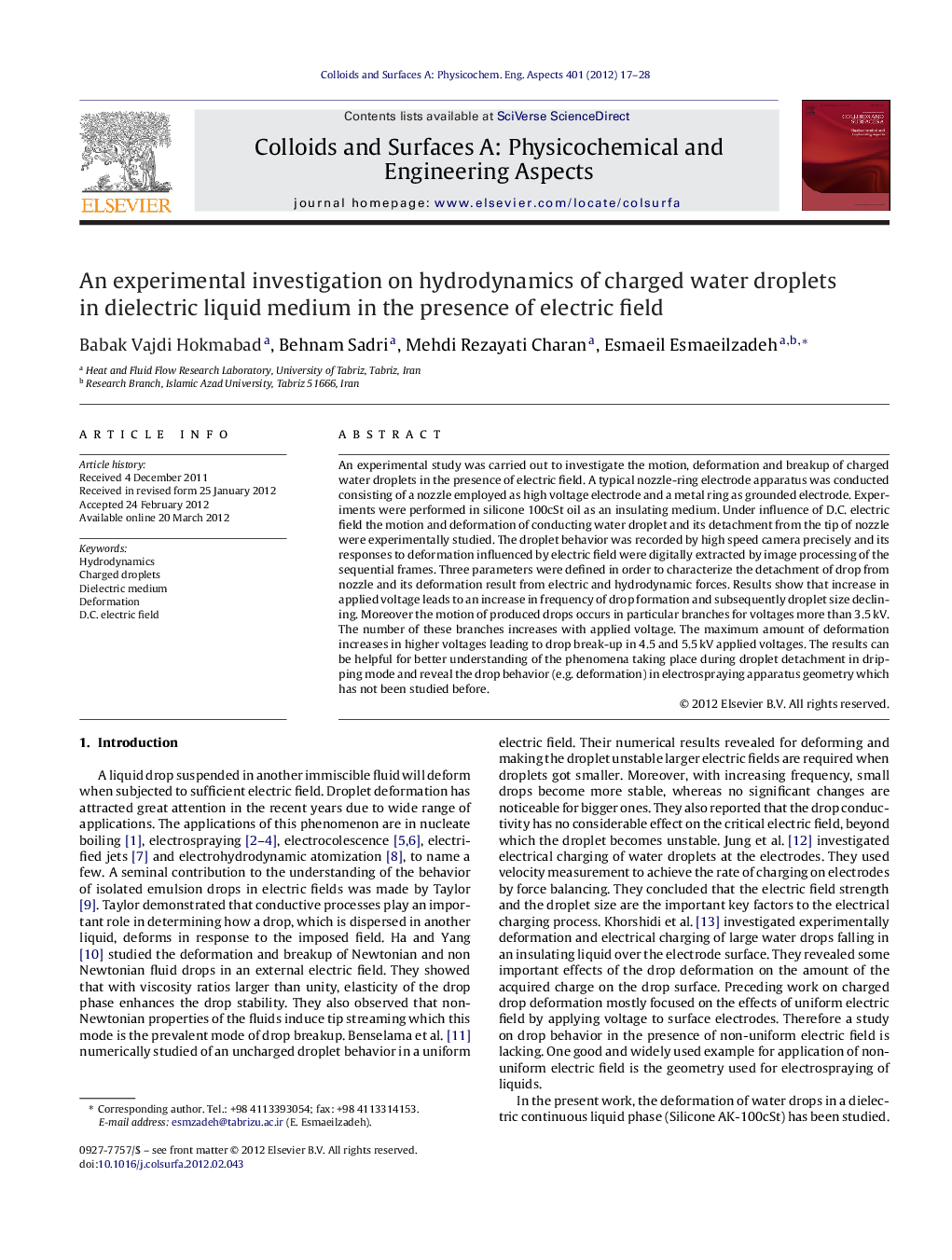| Article ID | Journal | Published Year | Pages | File Type |
|---|---|---|---|---|
| 594087 | Colloids and Surfaces A: Physicochemical and Engineering Aspects | 2012 | 12 Pages |
An experimental study was carried out to investigate the motion, deformation and breakup of charged water droplets in the presence of electric field. A typical nozzle-ring electrode apparatus was conducted consisting of a nozzle employed as high voltage electrode and a metal ring as grounded electrode. Experiments were performed in silicone 100cSt oil as an insulating medium. Under influence of D.C. electric field the motion and deformation of conducting water droplet and its detachment from the tip of nozzle were experimentally studied. The droplet behavior was recorded by high speed camera precisely and its responses to deformation influenced by electric field were digitally extracted by image processing of the sequential frames. Three parameters were defined in order to characterize the detachment of drop from nozzle and its deformation result from electric and hydrodynamic forces. Results show that increase in applied voltage leads to an increase in frequency of drop formation and subsequently droplet size declining. Moreover the motion of produced drops occurs in particular branches for voltages more than 3.5 kV. The number of these branches increases with applied voltage. The maximum amount of deformation increases in higher voltages leading to drop break-up in 4.5 and 5.5 kV applied voltages. The results can be helpful for better understanding of the phenomena taking place during droplet detachment in dripping mode and reveal the drop behavior (e.g. deformation) in electrospraying apparatus geometry which has not been studied before.
Graphical abstractFigure optionsDownload full-size imageDownload as PowerPoint slideHighlights► Deformation of water drops subjected to different electric fields were studied. ► Detachment procedure of drop from nozzle electrode was investigated precisely. ► Maximum amount of deformation increases with applied voltage growth. ► Drop break-up has been observed in sufficiently high voltages. ► Increase in applied voltage leads to an increase in the number of droplet paths.
